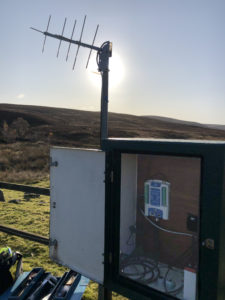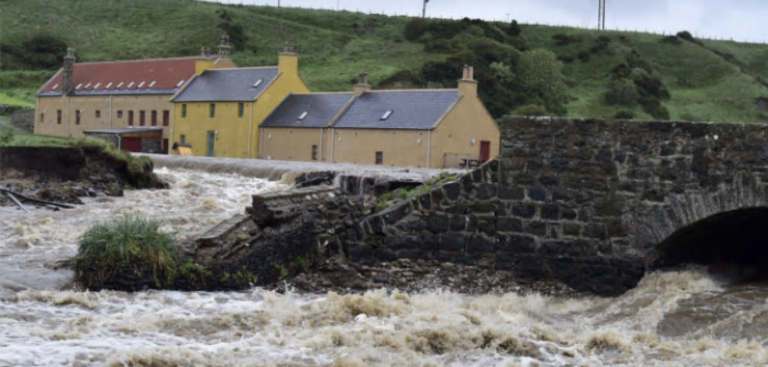In recent years the development of flood warning systems has benefited from advances in sensor, datalogger and communications technology. The expansion of mobile telecommunications has meant that more locations now benefit from increased coverage, so that water level and meteorological monitoring systems can now be installed in remote locations.
“In the past, data would have to be collected manually,” explained Robin Guy from OTT Hydromet, which specializes in such systems. “However, this is both time-consuming and costly, so modern systems employ telemetry to communicate with remote stations to lower costs and dramatically improve the speed and value of data.
“The most recent advance in remote communications has been the development of low-power, datalogging, satellite transmitters, which are able to transmit sensor data from almost any location on Earth. In the early days, satellite transmission of data was prohibitively expensive, but costs have lowered considerably, to the point where satellite telemetry competes directly with cellular communications.”
For example, in Scotland, water resources are monitored closely by the Scottish Environment Protection Agency (SEPA) to inform water management and to protect the environment. Part of this monitoring activity is undertaken to provide a free advance flood warning service known as Floodline.
 SEPA’s flood forecasting and warning relies on a network of water level and precipitation monitors, some of which are located in remote areas of catchments, where the communications infrastructure can be less than reliable. To try to rectify this situation, SEPA trialed one of Hydromet’s SatLink3 combined datalogger and satellite transmitter systems (pictured left) at a site in Boat of Garten, near Aviemore. The logger is SDI-12 compatible, and a PLS was used to monitor water levels and temperature, in addition to a rain gauge and an air temperature sensor.
SEPA’s flood forecasting and warning relies on a network of water level and precipitation monitors, some of which are located in remote areas of catchments, where the communications infrastructure can be less than reliable. To try to rectify this situation, SEPA trialed one of Hydromet’s SatLink3 combined datalogger and satellite transmitter systems (pictured left) at a site in Boat of Garten, near Aviemore. The logger is SDI-12 compatible, and a PLS was used to monitor water levels and temperature, in addition to a rain gauge and an air temperature sensor.
Hydromet notes that though many operators of satellite transmitters pay a small fee to transmit data via satellite, public organizations transmitting environmental data can access the EUMETSAT service free of charge.
Following two months of successful operation in Aviemore, the monitoring and satellite communications equipment was transferred to a site near Aberfoyle to serve as part of a flood warning system for another two months. It was also deployed near Charr in Aberdeenshire at a primary flood warning station because mobile communications at the location had been hindered by a new wind farm. Following the success of the trial, SEPA has subsequently decided to install satellite telemetry systems at 20 sites across Scotland.
Commenting on the expansion of remote monitoring, Robin Guy said, “There are obvious cost advantages to be gained by collecting data remotely, but the effectiveness of flood prediction is greatly enhanced by the ability to gather timely data continuously from remote monitoring stations. The latest sensors and loggers operate on very low power, with extended periods between service and calibration. Most sites can therefore operate from solar power and the necessity for site visits is dramatically reduced.”



